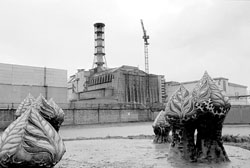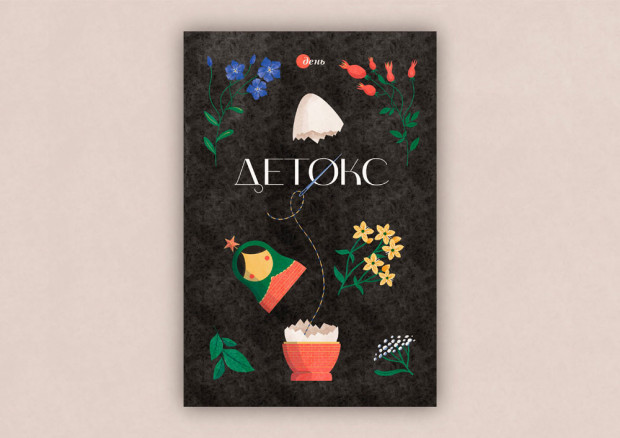SARCOPHAGUS: 300 years with radioactive effluents and some 2 billion hryvnias annually

During the whole trip by the board of the Emergency Management Ministry to the Chornobyl exclusion zone, organized the Friday before last for meeting there, the feeling of unreality continued to haunt me. Abandoned buildings, empty window holes, the completely buried village of Kopachy, the ghost town of Prypyat with the Soviet state emblem atop a sixteen story apartment building, gray and ominous shape of the Shelter, etc.
Emergency Management Minister Vasyl Durdynets admitted that scientists do not understand precisely what is happening inside the sarcophagus which is an object of permanent concern. According to Shelter Director Artur Korneyev, inside Unit Four there are serious problems with continuously accumulating dust and water. Atmospheric precipitation penetrates the turbine area, and the ground water level has increased. The water is purified insofar as possible but sarcophagus components are deteriorating and with time and break down. For this reason, experts have identified 29 components that have to be stabilized first. Six will be dismantled to prevent possible damage. Mr. Korneyev also informed us that the status of “the nuclear power unit at the stage of an accident beyond the scope it was designed to handle” had been changed and now the unit is considered “a temporary external surface storage site for radioactive wastes.” It is planned to construct the new shelter over the ruined unit in the year 2005.
Construction of the Vektor production complex has been started to solve the problem of wastes of low and medium level activity. According to Pavlo Korchahin, chief engineer of the specialized Tekhnotsentr Specialized State Enterprise, it is expected that the main parts of this complex will be commissioned next year. It is also planned to set up a national center for the reprocessing and burial of radioactive wastes based on the first phase of Vektor. Mr. Korchahin stated that in 300 years of natural decay the radionuclides will turn into ordinary garbage. Still, there is a longer lived highly active group of radioactive wastes that needs geological type storage deep underground. For the time being, the wastes will be stored at Vektor in special containers so as to bury them according to the guidelines after thirty to fifty years.
A nuclear fuel waste storage facility is being built in the exclusion zone to reprocess and store the fuel from reactors (25,000 fuel assemblies and 3,000 reactor control rods). Representative of the French company, which was the successful bidder for the storage construction, told us that the uranium would be brought to required condition at a reprocessing plant, then put into cassettes and placed in concrete blocks. The fuel will be unloaded within eight years and stored for 100. This will be a problem for several generations to say nothing about the money Ukraine will have to pay in order to solve it. These two factors plus the adverse environmental impact cast serious doubts on the advantages of nuclear power.
Meanwhile, the zone’s impact extends beyond the limits of the 30 km. area surrounded by barbed wire. The problems of the Shelter and closing of the Chornobyl complex are closely connected with the social consequences of the nuclear accident. According to Minister Durdynets, last year, for the first time in a decade, all Chornobyl programs were completely financed to the tune of UAH 1,812,000,000 (his year it is planned to allocate UAH 56 million more in state funds). In contrast to the past when one half of the funds for medical services was spent for equipment purchases, this year 80% of the money will be used to buy medicines. Officials of the Emergency Management Ministry are to visit all Chornobyl families before the sad date of the fifteenth anniversary of Chornobyl disaster.
Mr. Durdynets announced UAH 8.9 billion in state funds needs to be spent annually in order to observe all the provisions of Chornobyl legislation. UAH 6.5 billion of this should be used for social benefits. Of course, the country is not able to pay such money, so, said the minister, “It is necessary to carefully revise” the individual benefits for certain categories of citizens, while the persons that need special care should be “protected by all means.” Some 3,345,000 people in the country have Chornobyl status but, according to the Supreme Court, about 60% of such persons had received their Chornobyl certificates on insufficient grounds. According to the concept elaborated by the Emergency Ministry and submitted for consideration to Verkhovna Rada, it is also planned to use some “clean from radionuclides” lands in the regions affected by Chornobyl disaster for agricultural purposes. In addition, the ministry has drafted a joint memorandum on cooperation and harmonization of the Chornobyl laws of Ukrain, Russia, and Belarus.






